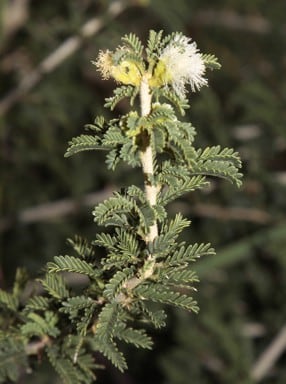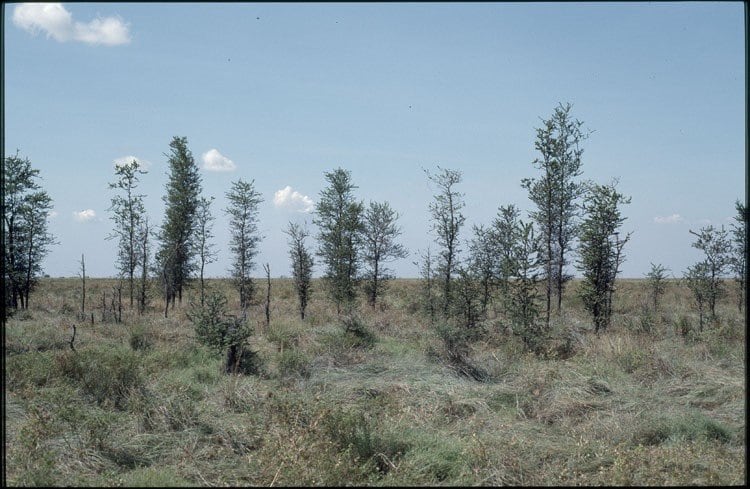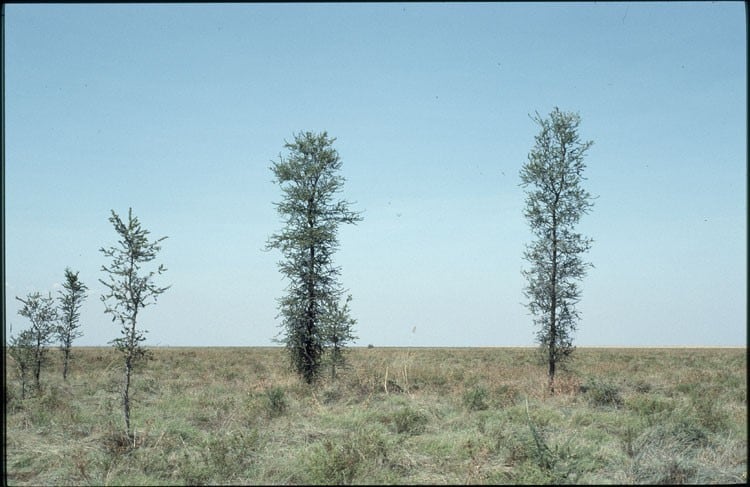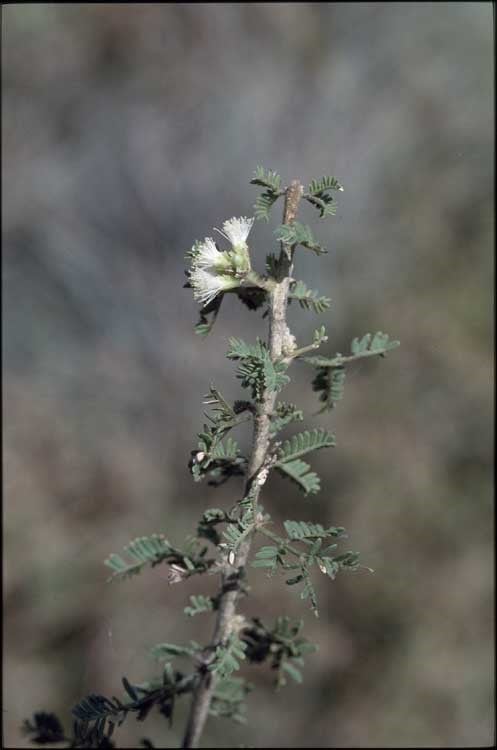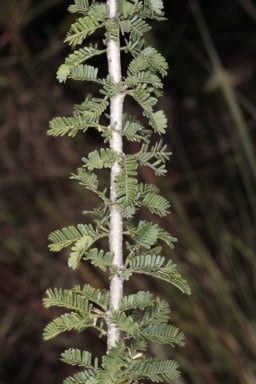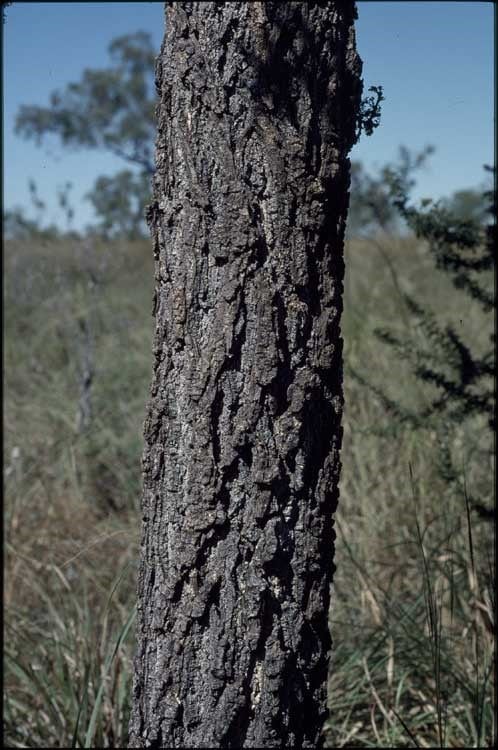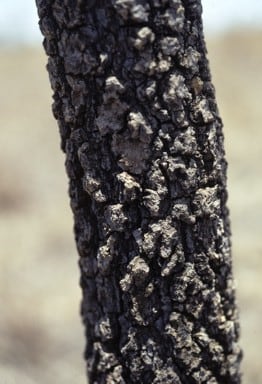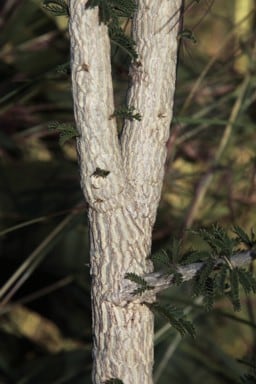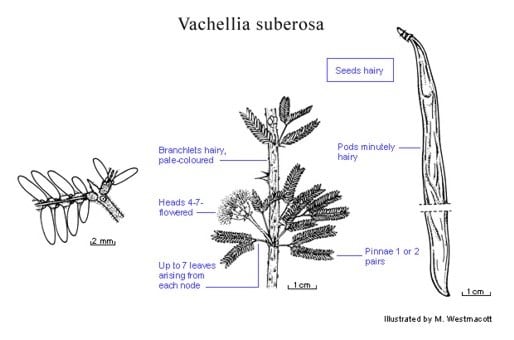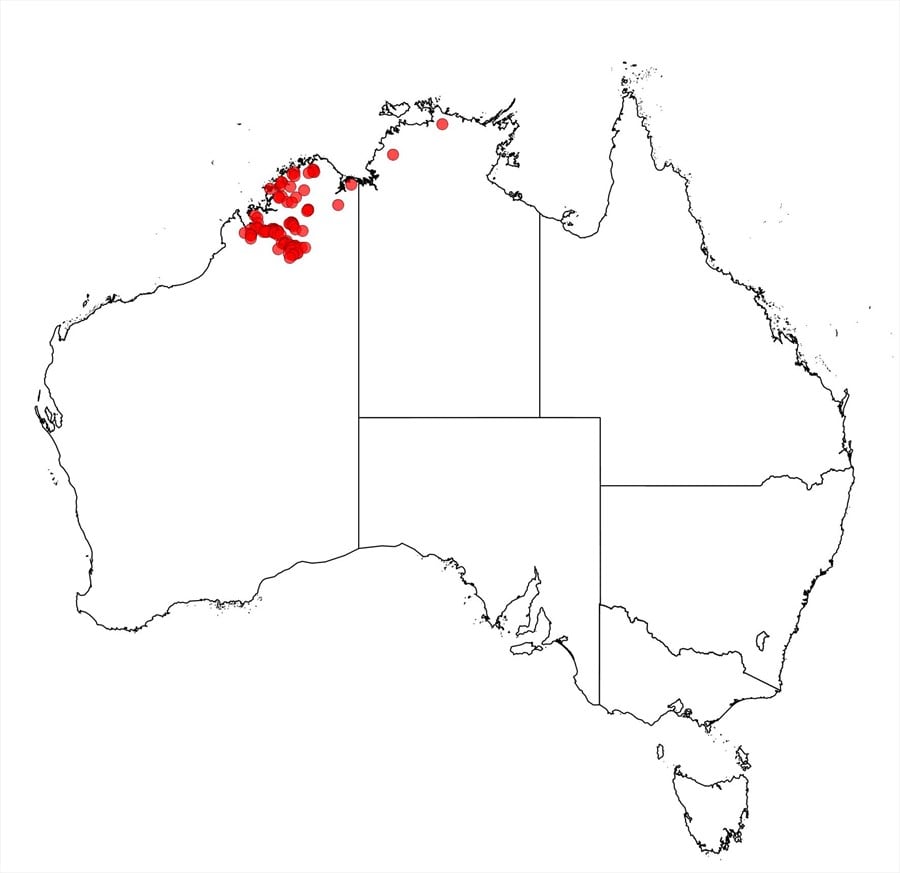Vachellia suberosa (A.Cunn. ex Benth.) Kodela
WATTLE
Acacias of Australia
Common Name
Corkybark Wattle, Mimosa
Family
Fabaceae
Distribution
Occurs in the Kimberley region of W.A. from Carson R. area (near Kalumburu) and the Mitchell Plateau S to Fitzroy R. and Fitzroy Crossing, and known from a single collection in the N.T. c. 13 km NE of Oenpelli Mission.
Description
Slender shrub or tree to 14 m high; canopy conical or columnar; branches short, horizontal and sometimes drooping. Bark hard, corky, deeply fissured. Branchlets with longitudinal furrows, moderately to densely pubescent or pilose especially when young, becoming almost glabrous and often flaky. Stipular spines 2–13.5 mm long, often diminutive and appearing absent. Leaves up to 7 arising from nodes: petiole mostly 0.1–0.7 cm long, pubescent, mostly with a small gland at base of pinnae; rachis when present 0.1–0.2 (0.25) cm long; pinnae 1 (rarely 2) pairs, 0.3–1.8 cm long; pinnules 5–16 (–19) pairs, narrowly oblong to cultrate, sometimes oblong, elliptic or ±lanceolate, 1.1–4.5 mm long, 0.4–1.3 mm wide, pilose, the hairs often mainly on the margins and sparse on both surfaces. Inflorescences simple, solitary in axils; peduncles 2–10 mm long, with involucel of bracts c. 1/2 way or below; heads globular, 4–7-flowered, white to pale yellow. Pods flat except slightly raised over seeds, 4–20 cm long, 7–14 mm wide, coriaceous, pale olive, brown, grey or grey-green, longitudinally striate, becoming ±ridged, puberulous to pubescent or velvety. Seeds ±white-villous though areole often partly glabrous.
Phenology
Flowers recorded Feb., Apr.–Aug.; fruits July–Sept., Nov.
Habitat
Grows often in grasslands, forming colonies of shrubs or trees which may be dominant or co-dominant with Bauhinia, sometimes in eucalypt woodland, frequently in grey or black, cracking, clayey soils or occasionally in sandy loam, on grassed mudflats, floodplains, in creek alluvium or on the fringe of downs in calcareous soil, sometimes in basaltic soils.
Specimens
W.A.: c. 25 miles [40 km] S Fitzroy Crossing, N.Byrnes 2228 (K, NSW, DNA, PERTH); near Mount House HS, Kimberley, C.H.Gittins 1436 (NSW); 2 km NE of Surveyors Falls, Mitchell Plateau, NW Kimberley, K.F.Kenneally 7045 (PERTH, TLF); 10 miles [16.1 km] E of Kimberley Downs Stn, M.Lazarides 6515 (CANB, K, NSW, PERTH). N.T.: c. 8 miles [12.8 km] NE of Oenpelli Mission, M.Lazarides 7744 (CANB, K, NSW, PERTH).
Notes
Probably without any close relatives due to unusual combination of attributes, including villous seeds, fide L.Pedley, Austrobaileya 6: 179 (2002).
Foliage and pods eaten by stock.
Based on molecular and other data Acacia sens. lat. is now considered as comprising a number of segregate genera, see J.T.Miller & D.S.Seigler, Austral. Syst. Bot. 25: 217-224 (2012) for overview. Many taxa in the former Acacia subg. Acacia are now referable to the genus Vachellia, including the one presented here.
FOA Reference
Data derived from Flora of Australia Volumes 11A (2001), 11B (2001) and 12 (1998), products of ABRS, ©Commonwealth of Australia
Author
P.G.Kodela, M.D.Tindale
This identification key and fact sheets are available as a mobile application:
URL: https://apps.lucidcentral.org/wattle/
© Copyright 2018. All rights reserved.
